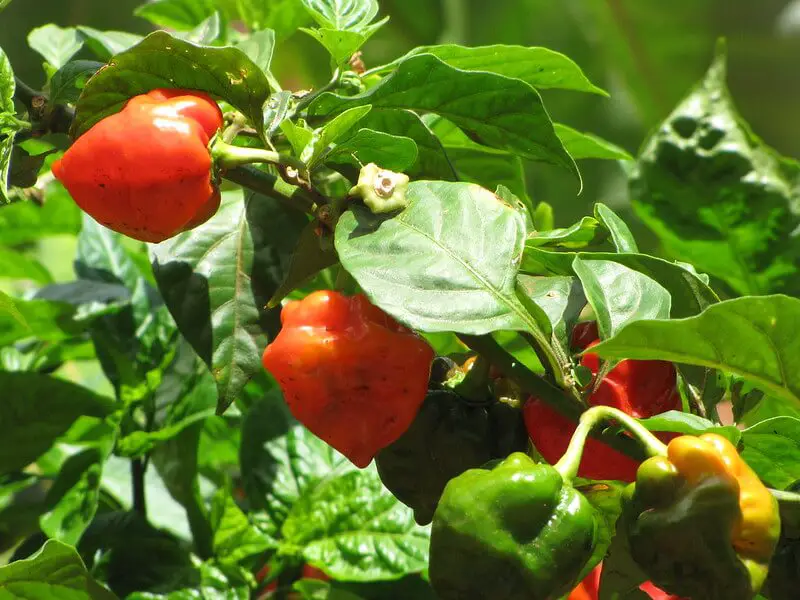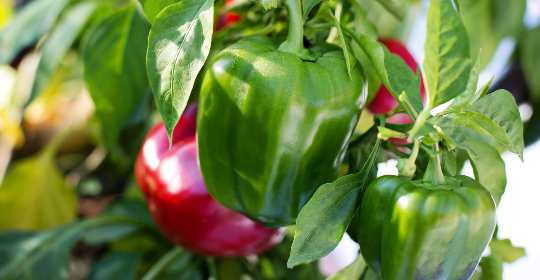We use affiliate links to run our site. When you buy through links on our site, we may earn an affiliate commission, without any added cost to you. Learn more
Peppers are a favorite of many vegetable gardeners. The plants come in a large range of colors, shapes, and sizes, and they can be used in everything from salads to main courses. and with a little care and attention, they can produce an abundance of peppers.
There are many different ways to grow peppers, but one method that will help you get more out of your plants is called topping. With the right tools and techniques, topping a pepper plant is a simple and easy process that anyone can do.
Here in this post, I will discuss what is topping and whether should you top your pepper plants at all. You will also learn the advantages and drawbacks of doing it and how to do it properly.
if you want to learn how to top a pepper plant the right way, then this guide is for you. It provides all the information you need to get started, from the tools you’ll need to the different techniques you can use.
So let’s get started.
What Is Topping?
Topping pepper plants is the practice of removing the top of the plant to encourage more lateral growth and fruit production.
This is normally done to encourage new growth and to prevent the plant from growing any taller. It also forces it to put more energy into growing side shoots instead of the main stem.
Toppingdefinitely requires a little bit of botanical knowledge and experience, but once you understand how it works and what it does, it becomes much easier and more enjoyable.
The Advantages of Topping Pepper Plants
Most gardeners know that pruning tomato plants is necessary to get the best results from their crops. Pruning tomatoes helps to keep the plants healthy, promotes better fruit quality, and increases yields.
However, many gardeners don’t realize that topping pepper plants, has similar benefits. Trees and shrubs are often topped to encourage growth and make them easier to care for, but this technique can also improve the health of your pepper plants and increase the quality and quantity of your fruit.
Following are the main benefits of topping or pruning a pepper plant.
1. Improved Yields:
Topping a pepper plant will improve overall yields by causing the plant to put out more shoots, which will result in more flowers and flowers that remain on the plant longer.
Topped plants will also produce a larger number of ripening peppers rather than just one large central fruit.
2. Improved Overall Health:
Topping pepper plants will encourage healthier growth because it reduces the amount of energy that is wasted on vertical growth. The lower branches on pepper plants are naturally weaker than the upper branches due to a lack of sunlight.
Topping a plant early in its life cycle allows it to create stronger lower branches which then receive more sunlight encouraging further growth.
3. Improved Stability:
A topped plant is a much more stable plant because it is less top-heavy and better able to handle strong wind gusts. This is particularly important for taller pepper varieties like bell peppers that can easily fall over if not properly staked or caged.
4. Enables The Growing Of Peppers In Small Spaces:
By topping your plants, you can keep them shorter and bushier which is ideal for small spaces. You will also increase your fruit production because you will have more branches and more flowers.
The Disadvantages of Topping Pepper Plants:

As I have explained above, the topping of peppers is a practice with many advantages/ benefits. However, it also has a few disadvantages.
Lesser Number of Fruits:
Topping pepper plants may reduce the total amount of fruit produced if a plant that is topped early in the season does not have enough time to produce new fruit-producing branches.
Delayed Fruiting:
Topping also delays fruit production, so there is less time for fruit to mature before frost or winter weather arrives.
Increased Stress For The Plant:
A pepper plant that has been topped has less foliage and therefore is exposed to more sunlight and heat than a non-topped plant.
This increased stress further reduces yields and can make a plant more susceptible to insect and other pest damage, including sunburn from direct sunlight exposure.
When To Prune Pepper Plants:
You should start topping your pepper plants once they’ve reached about 12 inches in height. Peppers are typically ready to be topped after about 12 weeks or so after transplanting.
If you start too soon, you’ll stunt the growth of your plant. If you wait too long, your plant will be too tall and it will be difficult for it to produce more flowers and fruit at this point.
How to Top Pepper Plants:
Topping a pepper plant is a simple process that anyone can do. You don’t need any special equipment or skills to top your peppers, just a pair of scissors or a sharp knife.
Topping simply involves pinching off the terminal bud (the “leader”) of the plant to encourage branching and the development of lateral buds.
Here is how to top pepper plants:
- Get a pair of gardening shears. make sure they are clean and sharp so you can make clean cuts.
- Go to the tip of the main stem of the plant.
- Cut the tip above the normal healthy branches.
- Use scissors to cut off the top set of leaves. Anywhere between two to four sets of leaves should be left on the plant. Don’t cut off more than that because this can kill your plant.
- That’s it. now you don’t need to do anything. Soon the branches below the cut will grow thicker and would become the main branches.
- You can do this not only in pepper plants but to other plants as well.
The Best Pepper Plant Varieties to Top
As you have seen, topping pepper plants is a good way to make them more stable, healthy, and productive.
But it is especially good when it comes to pepper plants that produce small peppers i.e. peppers that are no larger than one inch long.
This is because the fruits of such pepper plants are often so small that they are hardly noticeable on the pepper plant’s branches.
Therefore topping such pepper plants does not reduce their yields but encourages them to form more branches which means more peppers in the long run and also makes them stable and healthy.
Additional Pruning:
To maintain and keep your pepper plants happy you might have to do other pruning and trimming as well.
This includes trimming suckers, removing dead leaves and branches, clipping off some leaves from time to time, etc.
These pruning will encourage your pepper plants to grow more compact, bushier, and fuller rather than tall and spindly.
Try Growing Some Hot Peppers Today:
Pepper plants are a great way to add some spice to your garden. Rather than buying peppers from the grocery store, you can grow your own in your backyard.
There are tons of different varieties, from sweet peppers to hot peppers that will burn your mouth. You can learn more about growing peppers here in this post.
Conclusion:
When it comes to growing peppers, a lot of people prefer to grow their plants as large as possible, but you can actually top pepper plants and achieve a larger yield, especially if you’re growing in a small space. Topping is an easy way to increase the number of flowers and fruits on each plant.
Following these steps will ensure that you top your pepper plant correctly and produce the best possible yield. With the right tools and techniques, you can become a master at topping pepper plants. So what are you waiting for? Get out there and start topping!
I hope you enjoyed the post. If you like the post please share the information with others too.
Amazon and the Amazon logo are trademarks of Amazon.com, Inc, or its affiliates.

Hi there! My name is Prasenjit and I’m an avid gardener and someone who has grown a passion for growing plants. From my hands-on experience, I have learned what works and what doesn’t. Here I share everything I have learned.
